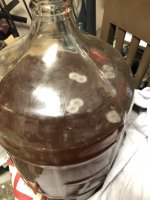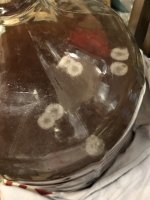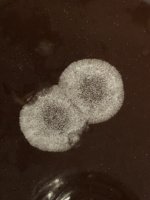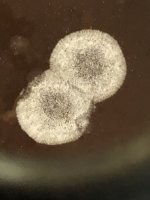Cbusbrewing
Member
- Joined
- Apr 8, 2018
- Messages
- 8
- Reaction score
- 0
Hello everyone,
I brewed a beer about 6 weeks ago that I left in primary for 3 weeks and then transferred to secondary for another 3 weeks. I keep a blanket wrapped around my carbon to keep light out. I was planning on bottling it tomorrow so I unwrapped it and found these floaters on top of my beer. Is this mold? Or some sort of infection? Do I need to dump this?
These were the best photos that I could get
I brewed a beer about 6 weeks ago that I left in primary for 3 weeks and then transferred to secondary for another 3 weeks. I keep a blanket wrapped around my carbon to keep light out. I was planning on bottling it tomorrow so I unwrapped it and found these floaters on top of my beer. Is this mold? Or some sort of infection? Do I need to dump this?
These were the best photos that I could get










































![Craft A Brew - Safale BE-256 Yeast - Fermentis - Belgian Ale Dry Yeast - For Belgian & Strong Ales - Ingredients for Home Brewing - Beer Making Supplies - [3 Pack]](https://m.media-amazon.com/images/I/51bcKEwQmWL._SL500_.jpg)
